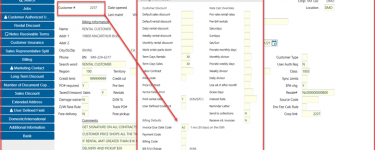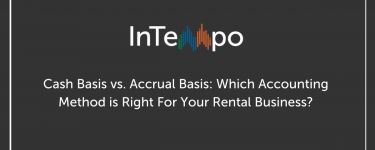The Complete Guide to Cycle Billing in the Rental Industry
Cycle billing lets you invoice your customers for open rental contracts at specific intervals (e.g., once a week or once a month). This is more predictable than demand billing, in which you ad-hoc bill your customer for open contracts – no matter the Start Rental or Last Billed dates. Cycle billing can also be more manageable for your accounting team, as automation helps remove the manual effort of invoicing.
How frequently should you cycle bill?
There’s no right or wrong answer here. How often you bill your customers will depend on their expectations, as well as your company’s cash flow needs and accounting policies. (Your ERP's accounting settings can also play a role in what you're able to accomplish; a rental-specific system will make this easier than one that's built for general use.)

In the rental industry, the most common cycle billing schedules include:
- Daily
- Weekly
- Bi-weekly
- 28-day cycle
- 30-day cycle
- Calendar-month (once per month on the date that the contract started – i.e., on the 15th of every month for a contract that originally began on January 15th)
- Exact-day (once per month on a specified date, with the first month pro-rated based on the contract start date)
- Last-day (on the last day of every month)
Other billing intervals include:
- Semi-monthly (on the 15th and the last day of each month)
- Exact-day billing over 1 month (once per month on a specified date, for the monthly rate + a daily rate for each day over 28 days – i.e., the monthly rate + 3 days for a month with 31 calendar days)
- Quarterly
- Semi-annually (twice a year)
- Annually (every year)
Some rental companies also use custom cycles for specific customers, jobsites, or categories/classes of equipment. This is considered “user-defined” billing.
Generally speaking, shorter periods can accelerate your cash flow, while longer periods are more convenient for the customer, as receive fewer invoices to process.
Finding the right cycle(s) for your business may involve some trial and error. This is why it’s important to find an accounting system that can not only accommodate the unique aspects of variable rental rates, but also a variety of billing cycles. You don’t want to be locked in to one or two intervals if your customers expect more flexibility with their invoicing.
Summary billing: consolidated cycle billing for multiple open contracts
If you have a customer who has several projects running at the same time, with multiple equipment at multiple jobsites, you may be sending them multiple invoices every month. This can make things unnecessarily complicated.
Summary billing can simplify this process. Your accounting system still processes bills for each rental contract. However, individual invoices are not printed out or sent to the customer. Instead, the system prints one summary invoice at a specific point in the billing period.
One word of caution when it comes to summary billing:
Because you’re still creating individual cycle billing invoices, these invoices can be printed manually. Your Accounts Receivable team needs to know which accounts are set up for summary invoicing; otherwise, they may assume that a customer’s invoices didn’t print due to an error and accidentally bill them twice.
Should you cycle bill manually or automatically?
Automatically running cycle bills speeds up your Accounts Receivable process. However, it’s common for rental companies to run their statements manually for a few days after moving to a new accounting system or making major changes to their existing process. We recommend a system that allows you to view your queue to spot-check for errors; once you’re fully comfortable with the results of your process, you can let your software take over on its own.

Can you cycle bill cash customers?
Although cycle billing is more common for customers with open credit accounts, some rental systems (including InTempo) allow you to cycle bill cash customers as well. You can apply up-front deposits and view the previous billing history for the account, including the:
- Number of times the contract has already been billed
- Last bill date
- Date out
- Location that wrote the contract
- Bill-to date
- Total amount due
Can you cycle bill certain accounts while keeping others on a demand billing schedule?
This is a fairly uncommon practice. However, some accounting systems let you set certain customers on a "never bill" cycle, allowing your team to send them their invoices manually. You'll have to pay close attention to these accounts, though, to make sure you're staying on top of the manual invoicing process and not missing out on hard-earned revenue.
Prorating your cycle bills
When a customer returns equipment part-way through a billing cycle, your cycle billing software will prorate their last invoice or bump them up to the next-closest tier. (For instance, three weeks round up to a full month.) Automating this process spares you the hassle of manually calculating the prorated amount.
Choosing accounting software that can accommodate cycle billing
Most rental software can accommodate some form of cycle billing, although industry-agnostic ERP systems may not. However, it’s important that you find a system that can support your company’s unique cycles – both now and in the future.
InTempo Enterprise doesn’t just offer a variety of cycle billing options; the fully integrated accounting package lets you choose different invoicing methods for each customer or contract. This makes it easier for you to provide the individualized service your customers have come to expect when working with an independent rental organization.
See how cycle billing works in InTempo Enterprise
Want a more in-depth look at how cycle billing works in InTempo Enterprise rental software? Request a demo or contact us with any questions.


